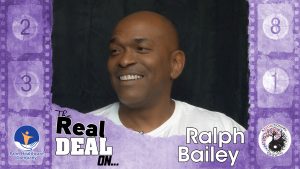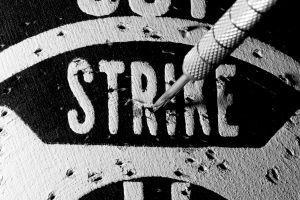by Sher Delva | Aug 11, 2017 | Addiction, Addiction Stigma, Celebrity, Stigma, Therapy, Withdrawal

Not long ago, we wrote an article regarding WWE Hall of Fame wrestler Kurt Angle and his journey to sobriety. Now, Kurt Angle is thrilled to announce that he has achieved four years of sobriety!
On Sunday evening, the wrestler posted a black and white meme of Mickey Mouse flipping the bird that said, “To all the people who said I couldn’t stay sober this long…”
He continued his words with a more serious tone:
“Yesterday was my 4th year anniversary of remaining sober. I’m very humbled by my progress and support. Had to post this, because there’s very little humor in recovery.” Angle continued, “So I’m going to enjoy this. Hope you all do too! “Here’s to 4 years bitches!!!!” #stayingsober #doingitformyfamily #itstrue.”
The 48-year-old has been vocal about his addiction and recovery from prescription painkiller addiction. Angle was first introduced to painkillers in 2003 after sustaining a neck injury. He felt pressured to conceal his injury to continue working, so he opted for painkillers to alleviate the pain.
“I remember taking that first pill, and I was like, ‘well, this makes me feel really good. I feel like I can take on the world and I can’t feel my neck.’ And the affect it had on me gave me more energy than I normally had, so I liked that feeling. So I tried that. One turned to two. Two turned to four. Four turned to eight. And before I knew it, I was out of control,” he said in an interview.
In order to conceal his drug use, Angle would hold off on taking narcotic pain medication during the evening. Right when the night time hit, he would abuse painkillers, alcohol, and anti-anxiety medication. At one point, Angle says he was ingesting 65 painkillers a day. He managed to rack up four DUIs over a six-year period.
At times, he was able to withdraw from opioids on his own, but eventually the desire to use caught up with him.
Looking back, Angle admits: “When you’re that deep into that stuff – you can’t do it on your own.”
In August of 2013, Angle finally reached his breaking point. After his fourth DUI in Wise County, Texas, he decided to enter rehab and has been sober since.
Since entering recovery, Angle has returned to the WWE as a general manager and has launched an app and website to help those in recovery.
“I’m traveling all the time for work, and I’m a husband and father to five kids, so I just don’t have time for AA meetings,” he said. “I could go to a counselor or a psychiatrist, but that’s pricey and still just one day a week. Where was I going to get this structure now?”
Because of these concerns, Angle developed a space that would help give people in recovery a sense of accountability and structure. The site and app, AngleStrong, offers users support, structure, positive affirmations, goals and reminders to help with their sobriety. The site offers tools that help address all aspects of recovery.
Angle stressed how crucial it was for him to maintain a conversational about addiction.
“What keeps me clean is talking about my addiction. I do it daily, whether it’s in the form of talking to a group, an interview or a video chat. And at the same time, I’m giving back.”
We commend Kurt Angle for his efforts in not only staying sober but helping others struggling in their journey as well. It is so important to offer a helping hand to those in the early stages of sobriety. The first year of recovery is challenging and a completely new experience. It is important to create a network of people who will keep you accountable during this period of time.
Addiction is a disease and recovery is the only way to manage and take back control fully. If you are struggling with mental illness or substance abuse, please do not wait to seek help. At one point, Angle felt completely out of control, but recovery gave his life back. You can regain yours too. Call now.
CALL NOW 1-888-922-5398
by Sher Delva | Aug 4, 2017 | Addiction, Celebrity, Drug Abuse, Mental Health, Stigma, Therapy

Any James Franco Fans Out There?
James Franco recently opened up about what he calls his “addictive personality.” It turns out the actor/director has struggled with workaholism and mental health his entire life.
Franco is known for his eclectic resume, starring in films such as Milk, Spiderman, Spring Breakers and City by the Sea. He has appeared in television shows like Freaks and Geeks and General Hospital.
The interview, with Out magazine, was to promote his upcoming HBO series, The Deuce. Franco chatted with novelist Edmund White about some of the challenges he faced, and how he managed to overcome them.
Teenage Angst
Franco’s troubles start way back in his teen years. During this period, he was arrested for underage drinking, graffiti, and shoplifting, among other things. Reflecting on that time, Franco told the Guardian, “It was teen angst. I was uncomfortable in my own skin. I was shy.”
Franco found acting as a way to cope and passionately immersed himself in it. He found acting to be an excellent outlet for his personality type. However, soon acting “became everything” to the point where he did not even socialize.
After doing nothing but working, Franco says he realized he was depressed, isolated and lonely.
“I really threw myself into it, and that became everything, to the point where I didn’t even socialize. And then after, like, 10 years of that, at age 27, I realized, ‘Man, I’m so depressed. On the surface my life seems pretty good—I have a career and everything—but I feel isolated and lonely,’” he admits
To combat these feelings, he decided to switch gears and go to school at Brooklyn College. However, just like with acting, academics became the focus of all his attention, and he was obsessive with that as well.
“I threw myself into school, but again it was just this sort of running, running, running,” he says.
Franco told Out that it has been difficult to overcome his workaholism. One of the ways Franco has found helps is through participating in activities like surfing and taking classes at the International Dance Academy on Hollywood Boulevard.
He says these activities are part of his “therapy,” to help him overcome his work addiction.
“It’s a kind of therapy for me,” he said. “I’ve started a new chapter of my life. I was very work-addicted and addicted to other things—not substances, I got over that a long time ago—but I’ve recently changed my life, and this is part of my therapy.”
—
What is a Workaholic?
The concept of workaholism or workaholic behavior is very misunderstood. Often, people see these behaviors as positive qualities. You might even hear people joke about how they are a workaholic as a way of describing their passion for their job and solid work ethic.
The truth is workaholism is a real condition that can severely impact a person’s life. People addicted to work sacrifice their social life, families, and personal connections due to their obsessive desire to work.
But what’s the difference between a hard worker and a workaholic?
This is a very common question. A hard worker is someone who works very hard while at work and completes all of their tasks, yet still manages to find a healthy balance between work and personal responsibility. Of course, the occasional burst of overworking may occur to meet important deadlines however, this is not the norm.
Workaholics, on the other hand, are unable to make this differentiation. They view work as a source of adrenaline. They feel they must work harder than everyone else and put in more hours in order to succeed.
Workaholics achieve one goal and immediately set more ambitious ones. Staying at the same level of accomplishment is a failure and results in incredible distress. Workaholics sacrifice their health, family, and personal life in order to work.
Overall, workaholism is something rarely addressed, but like Franco, people who struggle with workaholism often need professional help. If you are struggling with workaholism, mental illness, or substance abuse, please reach out. You are not alone. Call now.
CALL NOW 1-888-922-5398
by Sher Delva | Jul 18, 2017 | Addiction, Addiction Stigma, Addiction Treatment, Drug Abuse, Mental Health, Stigma, Therapy, Uncategorized

(This content is being used for illustrative purposes only; any person depicted in the content is a model)
A new Oregon bill is headed straight to the governor’s desk.
If passed, the bill would reclassify certain illicit drugs from a felony to a misdemeanor. The goal is to reduce the state’s prison population.The bill would also increase access to treatment for those without prior felonies or convictions for drug possessions, the Washington Post reports.
The bill would reduce penalties for possession of heroin, cocaine, meth and other illicit substances. The bill was already approved by the state legislature and now awaits the signature of the governor.
“We are trying to move policy towards treatment rather than prison beds,” said state Senator Jackie Winters, co-chair of the Public Safety Committee. “We can’t continue on the path of building more prisons when often the underlying root cause of the crime is substance use.”
Also included in the bill is a new initiative that will track the effects of law enforcement policies and procedures by collecting data on the demographic of Oregonians stopped by police. This initiative aims to identify any potential racist practices and address the disproportionate number of black Oregonians behind bars.
According to a 2016 report, by the Sentencing Project, blacks make up less than 2% of the state’s population; yet represent more than 9% of the state prison population as of 2014. Furthermore, the report found that the incarceration rates for black individuals are 5.6 times that of whites.
“Too often, individuals with addiction issues find their way to the doorstep of the criminal justice system when they are arrested for possession of a controlled substance,” says Kevin Campbell, executive director of the Oregon Association Chiefs of Police. “Unfortunately, felony convictions in these cases also include unintended and collateral consequences including barriers to housing and employment and a disparate impact on minority communities.”
Still, some lawmakers are wary of the bill and disagree with its “soft on crime” approach. State Senator Betsy Johnson, a Democrat who voted against the bill, said the shift toward decriminalization promotes a “hug-a-thug policy.”
The bill is headed towards the desk of Governor Kate Brown who will ultimately have the final say. In the past, Governor Brown has expressed support for the bill.
“While we still have much work ahead, HB 2355 represents an important step towards creating a more equitable justice system to better serve all Oregonians,” said Brown. “Addressing disparities that too often fall along racial and socioeconomic lines should not be political issues.”
While states like Oregon are attempting to address these disparities, on the federal level, things are headed in a different direction. Recently, Attorney General Jeff Sessions attended a D.A.R.E. training conference in Texas. While at the conference, Jeff Sessions praised the D.A.R.E. program of the 80s and 90s and hinted at bringing back that initiative today.
D.A.R.E is famously known as the “Just Say No” anti-drug initiative led by Nancy Reagan that took over school campuses in the 80s and 90s. The problem with the campaign is that there were never any proven results stating the program was effective in lowering drug use.
According to the U.S. Bureau of Justice Assistance:
“To date, there have been more than 30 evaluations of the program that have documented the negligible long-term impacts on teen drug use.”
Although the program has undergone some changes, the effectiveness of the initiative remains uncertain. Overall, it is interesting the different strategies certain parts of the country are taking in regards to addressing addiction. While some are focused on decriminalization, other areas have a tougher approach.
What are your thoughts on these new policies? Getting help can save a life, and treatment can offer a far better future than prison. If you or someone you love is struggling, please call toll-free now.
CALL NOW 1-888-922-5398
by Sher Delva | Jul 11, 2017 | Addiction, Addiction Stigma, Addiction Treatment, Mental Health, Withdrawal

Just over five years ago, Ralph Bailey was in his home about to attempt suicide. His addiction had spiraled out of control, and he did not believe he could ever live a day without drugs and alcohol. Then, in a moment Bailey describes as a“divine intervention,” his sister happened to come by the house and stopped him.
The next day, Bailey checked into Palm Partners Treatment Center, a Palm Healthcare facility. Now five years sober, Bailey is a valued employee at Palm Partners and speaks regularly to clients about his journey overcoming his addiction.
Recently Bailey was a guest on The Real Deal On… with Dug McGuirk. Surrounded by lights and cameras, Bailey describes the feeling of sharing his story as a “full circle” moment. He remembers a time when the cameras were on him for an entirely different reason. He was under investigation.
“I remember back in 2010 when I caught a case, and the FBI came in with pictures and audio of me, and it looks just like this.” He says looking around the room. “Now, when I say full circle, it means I went from being prosecuted with these cameras and microphones to actually sharing my experience, strength and hope with these same microphones and cameras.”
Reflecting Back on his “Death Date”
When Bailey first walked into Palm Partners on May 12, 2012, he was broken. In fact, Bailey says the most important day of his sobriety is not the day he entered treatment, but the day he attempted suicide. He refers to this day as his “death date.”
“I was broken to the point where my sobriety date is May 12, 2012, but I always tell my story with my death date which is May 11, 2012. What I mean by that is May 11 is the day I decided to commit suicide,” he says.
At this point, Bailey had struggled with addiction most of his life. He did not believe he could live without drugs and alcohol, but he did not want to continue living like he was. Therefore, suicide seemed like the only way out.
“I didn’t like where I was, and I didn’t want to go back to where I’ve been, and I was too scared to move forward because I could never picture living life without drugs and alcohol, so my plan was to end it all.”
In a moment that Bailey describes as a “divine intervention,” his sister happened to stop by the house and prevent the whole thing from happening.
“For me, it was totally divine intervention because I was successful at everything and it just so happens that for my suicide attempt, I got stopped. My sister came over to my house and stopped the whole thing. That’s when I broke down and told her I needed help.”
To his surprise, his sister told him the entire family knew about his addiction. Up until that point, he thought his addiction had been a secret for the past 20 years.
“She gave me the biggest hug and said ‘This is what the family’s been waiting to hear. You wasn’t fooling nobody,’ And the whole time, I’m thinking I had everybody fooled [and] nobody knew I was getting high.”
Learning to Cope Without Drugs
From an early age, Bailey struggled with abusing drugs and alcohol. He started around eighth grade and said he could not remember a time he did not use drugs and alcohol before his sobriety date.
“I can’t picture a time when I didn’t live without either one, and that’s what got me here.”
Still, like many, Bailey did attempt to get sober on his own.
“I did what everybody tries to do which is the detox on the couch.” He laughs.
Like most who attempt this method, he was unsuccessful. He did not know how to cope with the emotional and physical withdrawals of not using.
“It worked out good for a couple hours until boredom came in, until I didn’t know what else to do besides use drugs and alcohol, so I had nothing to fill the void when I tried to stop and that’s kinda related to my attempted suicide because I didn’t know what to do so that’s when I finally said enough is enough”
Bailey credits the staff, especially the therapists at Palm Partners for helping him learn how to fill the void.
“They’re the ones that made me realize I had more than just a drug and alcohol problem. I had anger issues. I had family issues.”
Bailey entered treatment in his 40s, a later stage of life compared to many in treatment, but he did not let the age of those around him affect his recovery process. Instead, Bailey says he wanted to make up for all the time he had wasted.
“I’ve wasted so much time in my life,” he says. “At that point, I didn’t care if I was getting clean with 18-year-olds, 20-year-olds; my main concern was the end result. As long as that was the same, it was all I cared about, but the main thing: I was tired. I had enough”
Starting Over On a Clean Slate
Furthermore, Bailey says he went to treatment as a “blank sheet of paper” and allowed the therapists and staff to provide him “new blocks to build on.”
“I took everything I knew and threw it out and started over,” he says.
The therapists at Palm Partners gave him the toolbox he needed and allowed him to realize he had the tools all along.
“That’s why I always say be honest with your therapists while you’re here because they can’t help you if you don’t tell them what’s wrong.”
At treatment, Bailey learned valuable lessons like how to deal with life when it does not go the way you want:
“Incidences like not getting your phone or incidences where you want to do something and you can’t should be a tool as ‘Alright, well how am I going to cope with wanting something that everybody has and I can’t have mine?’ That’s the same [lesson] that helps me stay clean. ”
Bailey says the times he could not access his phone taught him patience and helped him realize ineffective character defects addicts struggle with.
“Addicts, first we are manipulative, and then when manipulation doesn’t work, we’re crybabies,” he affirms. “We throw temper tantrums when we don’t get what we want, but we can’t do that in the real world.”
Navigating Grief: Learning to Change Your State:
One of the most powerful lessons Bailey shared in the interview was how he dealt with the death of his brother. After hearing his brother had passed away, he did what most would not think to do at that moment: jumping jacks.
“I had to do something to change my state,” he explains.
In that moment of despair, Bailey remembered something he learned from clinical director Dr. Beley about the way the addict’s mind works.
“Your brain automatically wants to take care of you. It doesn’t want you to feel any pain, but you have a five-second window to make a decision before you go back to what’s comfortable,” he says.
Bailey remembered the way the brain operates in regards to pain. He knew if he did not change his state immediately, his mind would retreat to what was most comfortable.
“If I didn’t start doing jumping jacks right away, my brain would automatically click to get high because that’s how I cope with things so, in order to stop that, I started doing jumping jacks and was able to change my state and then actually think and dissect everything that’s going on. Then start with a clear head and then move forward.”
“It is so huge to be able to change your state. You have to,” he says.
—
Ralph Bailey went from a hopeless drug addict to an inspiration of strength to those struggling in recovery. Throughout the interview, Ralph Bailey further elaborates on the importance of having a higher power, going to meetings and giving back. He talks about positive affirmations and further defines how to overcome negative situations through changing your state. We highly suggest you listen to the full interview for more on his journey.
“I never realized I was in a cocoon. I flourished, I came out of it, and it’s like wow, “he concludes.
If you are currently struggling in recovery, just remember that it is never too late to seek help. Even if you believe otherwise, recovery is possible. You do not have to live every day wondering where your next high will come from. Instead, you can regain control of your life like Ralph Bailey did. We want to help you. If you or someone you love is struggling, please call toll-free now.
CALL NOW 1-888-922-5398
by Sher Delva | Jun 28, 2017 | Addiction, Addiction Stigma, Addiction Treatment, Drug Abuse, Mental Health, Prescription Drugs, Stigma, Therapy, Uncategorized

One Ohio City is fed up with dealing with drug addicts who overdose over and over again.
Their solution? Simple: Three strikes and you’re out.
But is this really the right way to go about this?
Recently, Dan Picard, a councilman from Middletown, Ohio proposed a new strategy to handle the influx of overdose calls in his city. He claims the city had spent $100,000 on the lifesaving drug. His solution is to limit the number of times an addict can be revived with Narcan.
“It’s not a proposal to solve the drug problem,” Picard said this week. “My proposal is in regard to the financial survivability of our city. If we’re spending $2 million this year and $4 million next year and $6 million after that, we’re in trouble. We’re going to have to start laying off. We’re going to have to raise taxes.”
While it may seem extreme, Picard believes something must be done to reduce the hundreds of thousands of dollars spent administering the overdose antidote Naloxone.
According to the National Institute of Health, Naloxone, also known by the brand name Narcan, is a “medication designed to rapidly reverse opioid overdose.”
How the Proposed Plan Works
The plan proposed states that anyone who overdoses twice must complete community service equivalent to the cost of administering the Narcan. If the person has been provided Narcan two overdoses before and has not completed the required community service requirement, dispatchers will not send help their way.
“If the dispatcher determines that the person whose overdosed is somebody’s that’s been part of this program for two previous overdoses and has not completed community service and has not cooperated in the program, then we wouldn’t dispatch,” Picard explains.
Middletown has seen a significant spike in overdoses. Just last year alone, there were 532 overdoses reported. It may sound extreme, but Picard insists the city cannot afford to continue responding to overdoses at the same rate.
“We’ve got to do what we’ve got to do to maintain our financial security, and this is just costing us too much money,” he told NBC affiliate WLWT.
This city of Middletown, Ohio spent three times as much on Narcan this year as they did all of 2016. The numbers in 2017 already surpass that of the previous year at 577 overdoses so far.
Numbers Soar Throughout Ohio
All across Ohio, communities like Cleveland, Elyria, Parma, Chardon, and others have seen people need Narcan again and again after overdosing on opioids.
As of right now, the fire department is required by law to provide Narcan in response to an overdose. The legal department is reviewing this plan proposed by Picard. In the meantime, the fire department is applying for grants and donation to increase funds for Narcan.
Sal Valdez, the Clinical Coordinator for American Medical Response in Rochester, stated to a local news station, that he responds to at least four drug overdoses every day and about 80 every month. Each time, paramedics administer Narcan, they could need multiple doses. He also notices overdoses occurring in similar areas to repeat offenders.
“Sometimes we do know these patients by name,” Valdez said. “In my experience, we do see the same patients over and over again, and we respond to the same locations.”
Way Too Extreme?
One study estimates the cost of the prescription drug opioid epidemic costs American society $78.5 billion. Regardless, many find this proposed strategy way too extreme. This could mean the difference between life and death for some, preventing them the opportunity to recover.
Daniel Raymond, the deputy director of the Harm Reduction Coalition, told the Washington Post, that he’s “disappointed” by Picard’s plan of action. He noted that the proposal was an insult to families of loved ones struggling with addiction.
“Ohio is an epicenter of the heroin epidemic … and you can empathize with the frustration, but not with this type of solution,” Raymond told The Post.
What are your thoughts on this plan? Personally, it feels like this proposal only further stigmatizes the perception of addiction. Would we treat any other illness in this manner?
We believe recovery is a better option. Addiction should receive treatment just like any disease. Please seek help if you are struggling with substance abuse. Please call toll-free today to speak to an addiction specialist. We want to help.
CALL NOW 1-888-922-5398






